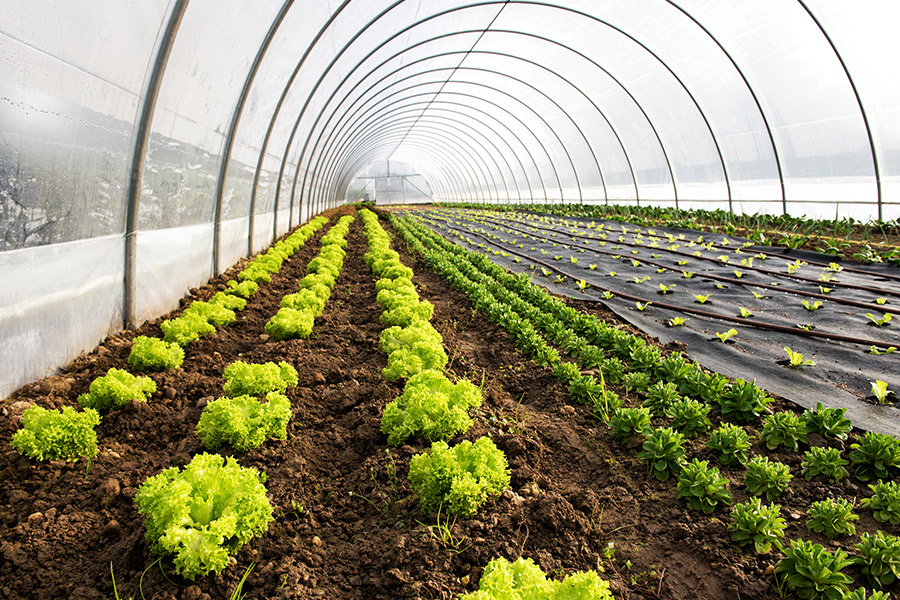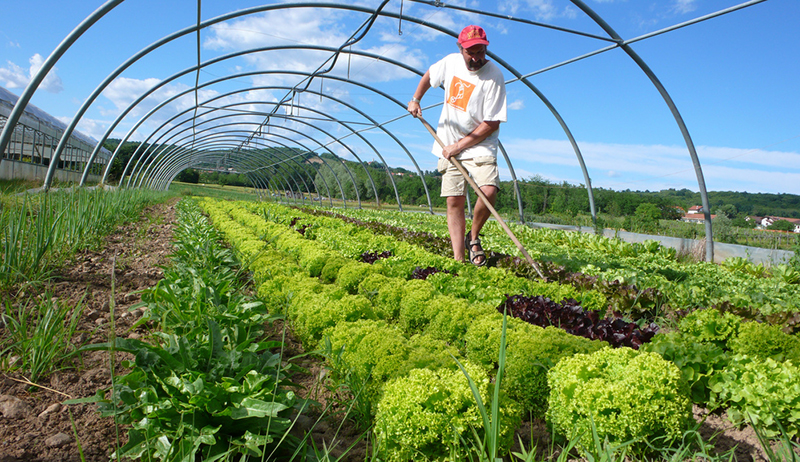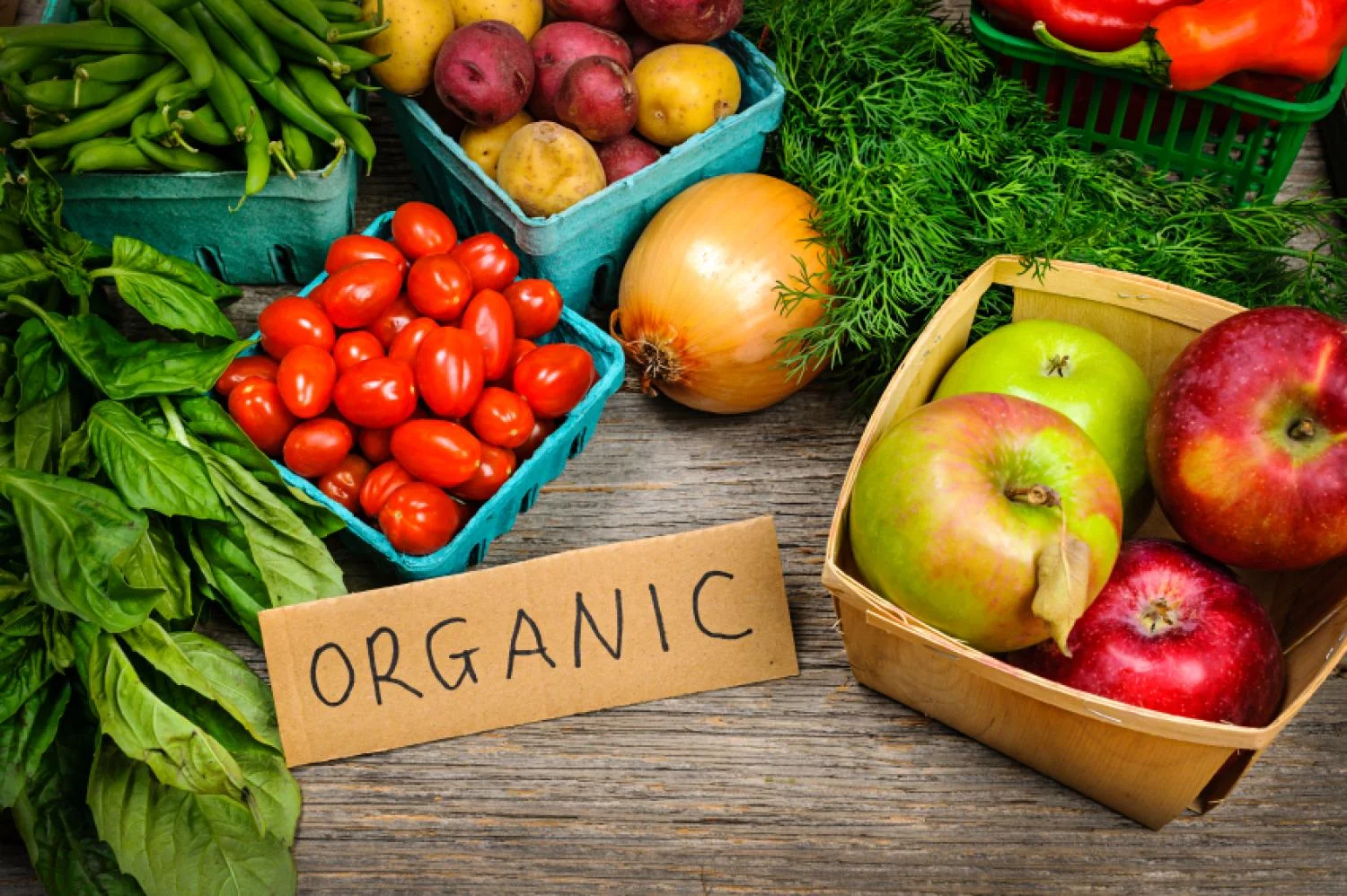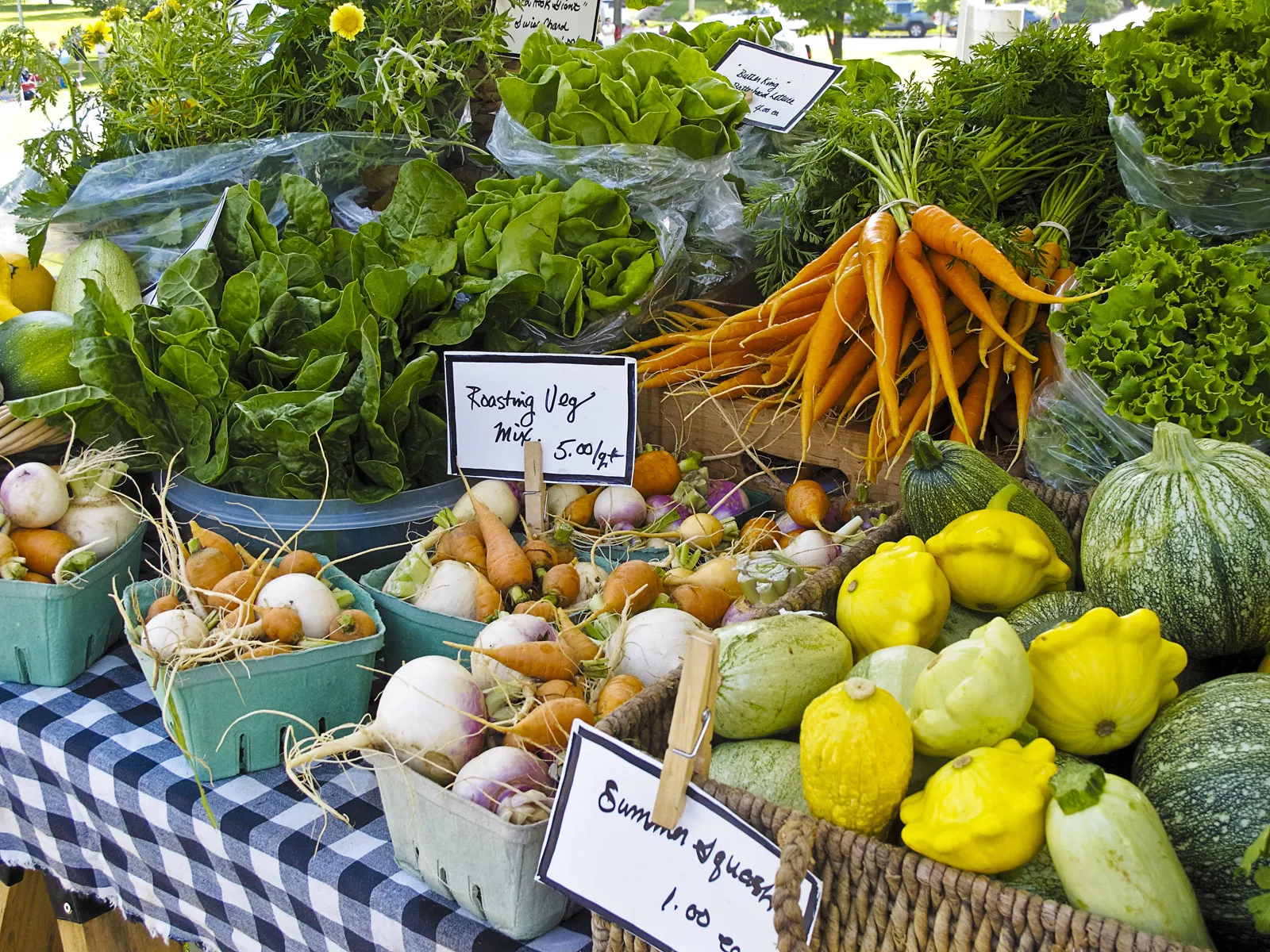Exercise Daily – California leads the nation in organic agricultural production. With around 15,000 certified organic operations in the state, California produces more organic products – over $1 billion worth – than any other state. Through organizations like the California Certified Organic Farmers (CCOF), the California Department of Food and Agriculture provides resources, assistance, and certification to help conventional farmers transition to organic practices. This guide outlines the steps involved and benefits of Organic Farming in California.
Organic farming is an agricultural practice that emphasizes the use of natural methods and materials to cultivate crops and raise livestock. It avoids using synthetic fertilizers, pesticides, genetically modified organisms (GMOs), and growth hormones. Organic farming has gained popularity due to its numerous benefits for the environment, human health, and overall well-being. Regarding exercise and fitness, organic farming can play a significant role in promoting a healthy lifestyle.
Why Transition to Organic Farming?
Californian farmers have several compelling reasons for transitioning to organic farming methods. Organic food and farming are two of the fastest-growing sectors in agriculture. With consumer demand and organic sales increasing annually by double-digits, organic production provides market opportunities for farmers. Transitioning can also help reduce input costs by eliminating synthetic pesticides and fertilizers. Many farmers cite health reasons for making the switch, such as growing food without chemicals and providing consumers with organic options free from exposure to toxic pesticides.
Environmental Benefits
Organic farming practices contribute significantly to environmental sustainability. By eliminating the use of synthetic chemicals, organic farming reduces pollution and conserves water. Organic farming also enhances soil health through natural methods, such as crop rotation and composting, which promote biodiversity and prevent soil erosion. Reducing greenhouse gas emissions from organic farming practices also contributes to mitigating climate change.
Economic Advantages
The economic benefits of transitioning to organic farming are substantial. The growing consumer demand for organic products allows farmers to command premium prices for their goods. Organic farms often have lower input costs because they do not rely on expensive synthetic fertilizers and pesticides. Additionally, organic certification can open up new domestic and international market opportunities, providing farmers with a competitive edge.
Health and Safety
Health and safety are primary motivations for many farmers transitioning to organic practices. Organic farming minimizes exposure to harmful chemicals for both farmers and consumers. By avoiding synthetic pesticides and fertilizers, organic farmers protect their health and that of their workers. Consumers benefit from the availability of organic products that are free from chemical residues, contributing to better overall health and well-being.
Organic farming focuses on building and maintaining soil health naturally, which produces nutrient-dense crops. Organically grown fruits, vegetables, and grains often have higher levels of vitamins, minerals, and antioxidants than conventionally grown counterparts. These nutrients support physical activity, muscle recovery, and overall health.

Organic Farming is Helpful for Fitness
Organic farming offers several benefits for exercise and fitness enthusiasts. By consuming nutrient-rich organic produce, individuals can fuel their bodies with wholesome foods that support physical activity, muscle recovery, and overall health. Choosing organic options helps reduce exposure to harmful chemicals and increase antioxidant intake, promoting a healthier lifestyle. Furthermore, supporting sustainable farming practices aligns with the values of many fitness enthusiasts who prioritize their well-being and the environment. Embracing organic farming can be a valuable addition to a fitness-focused lifestyle.
Here are some ways in which organic farming benefits exercise and fitness:
Reduced Exposure to Chemicals
Organic farming prohibits the use of synthetic pesticides and fertilizers, reducing the exposure to harmful chemicals for both farmers and consumers. Regular consumption of organic produce can help minimize the intake of pesticide residues, which may negatively affect health, including potential disruptions to the endocrine system. By consuming organic foods, individuals can support their exercise routines without worrying about harmful chemical exposure.
Enhanced Antioxidant Content
Organic crops are known to contain higher levels of antioxidants, such as vitamin C, vitamin E, and phenolic compounds. Antioxidants protect the body against oxidative stress caused by intense exercise. They help neutralize free radicals, reduce inflammation, and promote faster recovery from physical activity. Including organic fruits, vegetables, and herbs in the diet can provide an additional antioxidant boost.
GMO-Free Options
Organic farming prohibits the use of genetically modified organisms (GMOs). GMOs are organisms whose genetic material has been altered in a way that does not occur naturally. Although the long-term effects of GMO consumption are still being studied, some individuals prefer to avoid them. Organic farming offers a GMO-free alternative, allowing fitness enthusiasts to make choices aligned with their preferences.
Sustainable Farming Practices
Organic farming promotes sustainable agricultural practices prioritizing soil health, biodiversity, and water conservation. By supporting organic agriculture, individuals contribute to preserving natural ecosystems and reducing environmental pollution. Engaging in exercise and fitness activities in a clean and healthy environment can positively impact overall well-being.

Types of Organic Farming Products
1. Organic Fruits and Vegetables
- Fruits: Apples, berries, citrus fruits, bananas, grapes, and melons.
- Vegetables: Leafy greens (spinach, kale, lettuce), root vegetables (carrots, beets, potatoes), and other common vegetables like tomatoes, cucumbers, and peppers.
2. Organic Grains and Legumes
- Grains: Wheat, oats, quinoa, barley, and rice.
- Legumes: Beans (black, kidney, chickpeas), lentils, and peas.
3. Organic Dairy and Eggs
- Milk, cheese, yogurt, and eggs are produced by animals raised on organic feed without synthetic hormones or antibiotics.
4. Organic Meats and Poultry
- Beef, chicken, pork, and lamb from animals raised in humane conditions with organic feed.
5. Organic Herbs and Spices
- Basil, oregano, thyme, rosemary, turmeric, and ginger.
6. Organic Nuts and Seeds
- Almonds, walnuts, flaxseeds, chia seeds, and sunflower seeds.
7. Organic Oils and Sweeteners
- Olive oil, coconut oil, honey, maple syrup, and agave nectar.
Uses of Organic Farming Products in Remedies
1. Organic Fruits and Vegetables
- Lemon and Honey Remedy: Lemon juice mixed with honey can soothe sore throats and boost immunity.
- Carrot Juice: Rich in beta-carotene, it supports eye health and skin vitality.
- Ginger Tea: Fresh ginger boiled in water can relieve digestive issues and reduce inflammation.
2. Organic Grains and Legumes
- Oatmeal Mask: Ground oatmeal mixed with water can be applied as a facial mask to soothe irritated skin.
- Quinoa Salad: Packed with protein, quinoa can support muscle repair and overall health.
3. Organic Dairy and Eggs
- Yogurt Face Mask: Organic yogurt applied to the face can hydrate skin and improve complexion.
- Egg White Mask: Egg whites can tighten skin and reduce pores when used as a mask.
4. Organic Meats and Poultry
- Bone Broth: Made from organic chicken or beef bones, it can support joint health and boost the immune system.
5. Organic Herbs and Spices
- Turmeric Paste: Mixed with water or coconut oil, turmeric can be applied to wounds to reduce inflammation and promote healing.
- Basil Tea: Basil leaves boiled in water can help reduce stress and improve digestion.
6. Organic Nuts and Seeds
- Almond Oil: Used as a moisturizer for skin and hair.
- Flaxseed Water: Flaxseeds soaked in water overnight can be consumed to improve digestion and reduce inflammation.
7. Organic Oils and Sweeteners
- Coconut Oil: This can be used for oil pulling to improve oral health and as a natural moisturizer.
- Honey: Honey can promote healing and prevent infection when applied to cuts and burns.

Uses of Organic Farming Products in Recipes
1. Organic Fruits and Vegetables
- Smoothies: Blend organic berries, bananas, spinach, and almond milk for a nutritious breakfast.
- Roasted Vegetables: Organic carrots, potatoes, and bell peppers roasted with olive oil and herbs make a delicious side dish.
2. Organic Grains and Legumes
- Quinoa Salad: Mix cooked quinoa with chopped organic vegetables, herbs, and a lemon vinaigrette.
- Lentil Soup: Organic lentils simmered with tomatoes, onions, and spices create a hearty and healthy soup.
3. Organic Dairy and Eggs
- Greek Yogurt Parfait: Layer organic Greek yoghurt with fresh fruit and a drizzle of honey.
- Omelette: Organic eggs whisked and cooked with organic vegetables and cheese.
4. Organic Meats and Poultry
- Grilled Chicken: Marinate organic chicken breasts in olive oil, garlic, and herbs before grilling.
- Beef Stew: Organic beef chunks cooked slowly with organic carrots, potatoes, and onions in a rich broth.
5. Organic Herbs and Spices
- Herb-Infused Oil: Organic olive oil infused with rosemary, thyme, and garlic for cooking or salad dressings.
- Turmeric Latte: Warm milk mixed with turmeric, cinnamon, and honey for a soothing drink.
6. Organic Nuts and Seeds
- Chia Pudding: Chia seeds soaked in almond milk and sweetened with organic honey, topped with fresh fruit.
- Nut Butter: Homemade almond or peanut butter using organic nuts.
7. Organic Oils and Sweeteners
- Salad Dressing: Olive oil mixed with balsamic vinegar, Dijon mustard, and honey.
- Baked Goods: For a healthier alternative, bake muffins, cookies, and cakes with organic coconut oil and honey.

Developing an Organic System Plan
An organic system plan is a farm plan that outlines the practices to produce organic crops and livestock in an environmentally and socially responsible manner. It includes a description of the farm, crops/livestock to be certified, inputs used, maps, preventive practices, record-keeping procedures, and more. With the assistance of CCOF experts, farmers can create a detailed yet practical system plan tailored to their operation.
Components of an Organic System Plan
An effective organic system plan covers several key components:
- Farm Description: A detailed description of the farm, including its location, size, and the types of crops and livestock produced.
- Crop and Livestock Management: Information on the crops and livestock to be certified, including planting schedules, crop rotation plans, and livestock management practices.
- Input Management: A list of inputs used on the farm, such as fertilizers, pest control products, and soil amendments, along with documentation that these inputs meet organic standards.
- Preventive Practices: Strategies for preventing pest and disease problems, such as crop rotation, biological controls, and cultural practices.
- Record Keeping: Procedures for maintaining detailed records of all farming activities, including input applications, crop yields, and sales records.
Tailoring the Plan to Your Farm
Every farm is unique, and an organic system plan should be tailored to your operation’s specific needs and conditions. CCOF experts can provide guidance and support to help you develop a plan that meets organic standards while being practical and effective for your farm. By working closely with CCOF, you can create a plan that supports your transition to organic farming and ensures long-term success.
Managing Weeds, Pests, and Diseases Naturally
Making the switch to organic means focusing on prevention over treatment. Farmers redesign cropping systems, use cover crops and crop rotations, and incorporate beneficial insects and biodiversity to crowd out problematic weeds and pests. Organic farmers also rely on cultivation, flaming, and mulching for weed management and use biological and cultural controls for insects and diseases.
Weed Management
Effective weed management is crucial for organic farming. Organic farmers use a combination of cultural, mechanical, and biological methods to control weeds. Crop rotation and cover cropping help suppress weed growth by disrupting their life cycles. Mechanical methods, such as cultivation and flaming, physically remove or kill weeds. Mulching with organic materials, such as straw or wood chips, helps smother weeds and conserve soil moisture.
Pest and Disease Control
Organic farmers use integrated pest management (IPM) strategies to control pests and diseases. This includes monitoring pest populations, using beneficial insects and natural predators, and implementing cultural practices that reduce pest and disease pressure. Biological controls, such as microbial pesticides and insecticidal soaps, are also used to manage pests. Crop rotation and diversification help prevent the buildup of pest and disease populations.
Benefits of Organic Farming for the Environment
Beyond financial gains, transitioning to organic brings many ecological advantages. Organic systems build soil health and sequester carbon while reducing greenhouse gas emissions. They also protect water resources by eliminating synthetic chemicals and building biodiversity above and below ground. Overall, organic agriculture is a more climatically intelligent form of food production that sustains rather than depletes the environment.
Soil Health and Carbon Sequestration
Organic practices enhance soil health by increasing organic matter and promoting microbial activity. These practices also sequester carbon, helping mitigate climate change. Healthier soils lead to more productive and resilient farming systems.
Water Conservation and Quality
Organic farms reduce runoff and protect water quality by eliminating synthetic chemicals and using cover crops. Organic systems also improve water retention, reducing the need for irrigation and enhancing drought resilience.
Biodiversity and Ecosystem Health
Organic farming promotes biodiversity by creating habitats for beneficial insects, birds, and other wildlife. Diverse cropping systems and natural pest management techniques support healthy ecosystems, contributing to overall farm sustainability.

The Future of Organic Agriculture in California
All indications point to the ongoing growth of organic farming in California and nationwide. Over 13% of farmland in the state is now organically managed, and that figure climbs each year. With its climate and diverse portfolio of speciality crops, California is perfectly positioned to expand organic production and take a global leadership role. As more farmers adopt regenerative practices, organic farming represents a sustainable future for agriculture and environmental stewardship in the Golden State.
Trends and Opportunities
The organic sector continues to grow, driven by consumer demand, environmental awareness, and supportive policies. Innovations in organic farming techniques and technologies also create new opportunities for farmers to improve efficiency and productivity.
Policy and Advocacy
Supportive policies and advocacy efforts are essential for the continued growth of organic agriculture. Farmers can help shape a favorable regulatory environment that promotes organic farming by engaging with policymakers and industry organizations.
FAQs About Organic Farming in California
Q: How long does the organic certification process take?
A: The full certification process takes a minimum of three years to complete, including the transition period and all documentation requirements. It’s best to start the planning process at least a year in advance.
Q: Is it difficult to manage weeds and pests without synthetic chemicals?
A: It does require adjusting cultural practices and trying new organic methods, but many farmers find effective organic solutions. CCOF provides a wealth of resources to help farmers through the learning curve.
Q: Will my yields decrease after transitioning?
A: Most farmers report little change or occasionally slight decreases for the first few years as the system adjusts. However, as soil health and natural pest/disease resistance improve, yields often recover and surpass pre-transition levels within 5 years.
Q: Are organic food prices higher for consumers?
A: On average, organic products do command modest premium prices related to smaller economies of scale and more labor-intensive production methods. However, the nutritional and environmental benefits of choosing organic are valuable to many consumers.
Q: How can I find processing and marketing outlets for my organic products?
A: Farmers markets, CSAs, buyers lists from organic associations, and the Organic Produce Network are good starting points. Contacting your area’s brokers, wholesalers, retailers, restaurants, or food hubs can also help connect supply with demand. CCOF provides resources to help locate processing and market opportunities.




